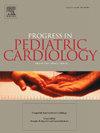Indications for cardiac anesthesia in children
IF 0.6
Q4 PEDIATRICS
引用次数: 0
Abstract
Background
Children with congenital and acquired heart disease are at high risk for developing anesthesia-related cardiac arrest. Children with single ventricle physiology, left ventricular outflow tract obstruction, including Williams syndrome, cardiomyopathy, and pulmonary hypertension are at the highest risk for developing anesthesia-related cardiac arrest.
Aim of review
The purpose of this article is to review anesthesia in children with cardiovascular diseases, factors associated with anesthesia-related cardiac arrest, and treatment to decrease anesthesia-related mortality.
Key scientific concepts of review
Children with congenital heart disease have fewer complications and lower mortality when the anesthesiologist has specialized training and experience in pediatric cardiac anesthesia. Comprehensive evaluation before anesthesia includes a review of the patient, planned procedure, risks, and interventions for risk reduction. Admission for initiation of intravenous fluids at the start of fasting may be advised, potentially preventing risks associated with decreased preload from fasting. The anesthetic plan includes selection of agents and monitoring for induction, maintenance, emergence, and postanesthesia care. Patients with single ventricle physiology may require adjustments of pulmonary and systemic vascular resistance to optimize pulmonary and systemic blood flow. Left ventricular outflow tract obstruction may be subvalvular, valvular, or supravalvular, static or dynamic, and associated with an increased risk of perioperative cardiac events, including arrhythmias, myocardial ischemia, and heart failure. Patients with Williams syndrome may have supravalvular aortic stenosis, pulmonary artery stenosis, biventricular outflow tract disease, or coronary artery abnormalities; anesthesia typically includes intravenous induction and strategies to minimize blood pressure variation and tachycardia. In patients with pulmonary hypertension crisis under anesthesia, prompt treatment includes mild hyperventilation with 100 % oxygen and initiation of nitric oxide. Multidisciplinary collaboration between specialists, including anesthesiologists, cardiologists, surgeons, radiologists, and interventional specialists, may facilitate the development of the safest possible anesthetic plans.

求助全文
约1分钟内获得全文
求助全文
来源期刊

PROGRESS IN PEDIATRIC CARDIOLOGY
PEDIATRICS-
CiteScore
0.90
自引率
11.10%
发文量
69
审稿时长
75 days
期刊介绍:
Progress in Pediatric Cardiology is an international journal of review presenting information and experienced opinion of importance in the understanding and management of cardiovascular diseases in children. Each issue is prepared by one or more Guest Editors and reviews a single subject, allowing for comprehensive presentations of complex, multifaceted or rapidly changing topics of clinical and investigative interest.
 求助内容:
求助内容: 应助结果提醒方式:
应助结果提醒方式:


